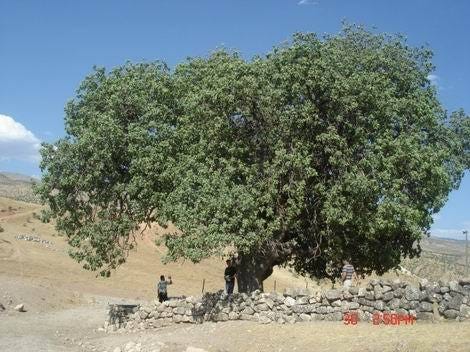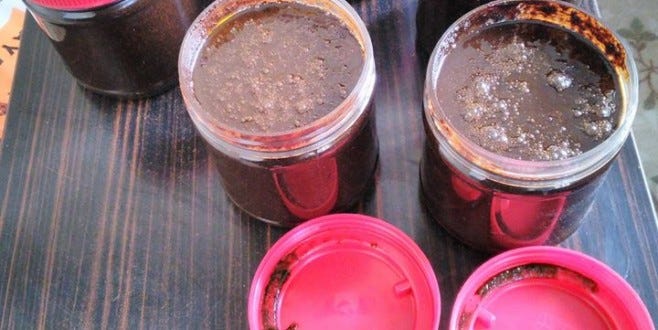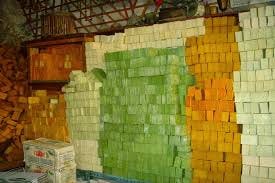Pistacia: Coffee and Soap.


Pistacia is a genus of flowering plants that includes Pistacia vera(Pistachios) but also has other species that are of less economical values but as important to local societies that lived with them for centuries and adapted to use all parts of these trees in their daily lives.
Pistacia trees are found in the Middle East, North Africa, Southern Europe, West Asia(Turkey, Iran, and Afghanistan) to Mexico and Southern United States.

They are adapted to drought and alkaline soils as well as fluctuations in temperatures from -10 C in the winter to 45 C in the summer. They are trees or shrubs 5–15 meters in height and could live for over a thousand years.
The trunk could reach 2 meters in diameter and it may take 200 years to reach 1 meter in diameter.

It is the root stock for Pistachio vera(pistachios) trees where the Pistachios scion is grafted on a Pistacia root stock.

The genus Pistacia is estimated to be around 80 million years old.
So the genus Pistacia is from the Sub family Anacardioideae and the family Anacardiaceae of the order Sapindales.

Here I will talk about Pistacia terebinthus leaving the others for a coming post.

The fruit of Pistacia is a drupe size of a pea red to brown or blue in color. The fruits are eaten and dispersed by birds. The plants emit a resinous smell that is very intense and aromatic. They are known to be very hardy plants and survive where other species have been eliminated.
The tree is tapped for turpentine. Terebinth resin has the ability to kill certain bacteria. The resin is used as a chewing gum in Turkey. The essential oil is used in perfume industry. The leaves are rich in tannins up to 20% in the galls caused by an aphid parasite. They are used as raw material for tanning in the leather industry. The sap is dried and used as incense.
In Cyprus the fruits are used for baking a specialty village bread and the young shoots are used as vegetables in Northern Sporades in Greece and Turkey.

But the Turkish genuine use of the seed was manifested in 2 products:
Menengic Kahvesi(pistacia coffee) and Menengic sabunu(Pistacia soap).
Pistacia coffee is made by roasting the seeds for 20 minutes at 200 degrees where they start to show a volatile chemical profile similar to coffee beans.

The roasting produces chemicals that give the nuts a burned sugar and caramel smell with a slight pine and citrus flavor.
Dr Mustafa Ozel of the University of York says”While the overall chemical composition is not similar to coffee beans, the roasted final product has a similar volatile composition.”
The good thing about this coffee is lack of caffeine naturally. So it offers an alternative to people hooked on coffee but suffering from too much caffeine consumption. Also it could be a gourmet style coffee for those adventurous in trying out of the norm drinks.

Some coffee shops in Turkey claim to have served Pistacia coffee for over 4 centuries.

The Pistacia soap is another product in Southern turkey. The seeds are pressed to extract the oil which is used to make a famous local soap.
The Pistacia oil is added to olive oil to make the soap in a traditional way.
Most of the soap is made in Mardin and Sirt in Southern Turkey. They claim the soap to have good benefits to hair and skin. It is alleged that it is a good treatment for hair loss and dandruff with very conditioning effects.
So next time you enjoy your Pistachios nuts think of other products that this genus offer and the genuine ways peoples have developed to make use of their other products from coffee to soap to many more.



